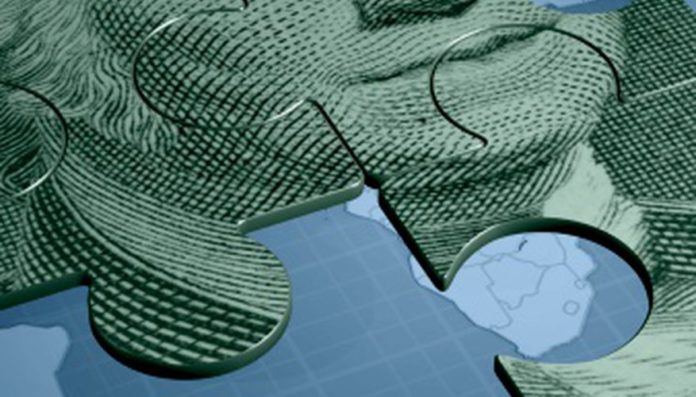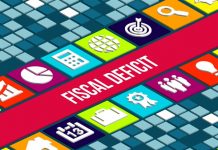
Pakistani media has a knack for churning out complex and technical terminology in order to manufacture narratives. It seems the aim is to shape public opinion on a given subject matter to the innocent bystander that even TV anchors can easily appear as Ivy League PhD graduates in Economics. Perhaps a part within us readily accepts the great illusion of knowledge presented by anchors – but that’s a topic of discussion for another time.
Getting down to business – the “twin deficits” is a term you’ve probably heard repeatedly in the media in the past few months. Economists tend to panic when they see the twins and they rightly do so; historically, economies have nosedived into catastrophe due to the mere existence of the twins.
But who exactly are these twins and why are we taking so much time out to discuss them? What are the reasons for their existence in Pakistan and what can be done to alleviate us from their presence?
In economic theory, a “twin deficit” occurs due to an existing causal relationship between two leading economic indicators that define money movement: the “budget account deficit” and “current account deficit”.
In Latin, the word deficit means “lacking”. To simply put it, when the budget account and current account lack in conjunction, “twin deficits” becomes a reality. The theory goes to say that a lack of the former leads to lacking the latter.
In laymen terms, the budget account itself measures the difference between government spending and revenue collection. The government collects money via numerous taxing methods and other non-tax items such as receipts of domestic and international investments.
The government spending is predominately on infrastructure, development projects and day-to-day operations of its institutions. And in some cases, in Pakistan, spending could also mean pocketing some of that cash for goodwill (i.e. corruption).
What’s interesting is when one breaks down the budget account into two further measures: the revenue account and the fiscal account. Both measures touch upon different sides of the government’s earning and spending habits.
In basic terms, a deficit in the revenue account alludes to a shortfall in cash to cover day-to-day expenses, whilst a deficit in the fiscal account alludes to the additional shortfall from non-day-to-day expenses such as investments (example Metro Bus Project – the money invested vs the return on investment).
Hence the fiscal deficit is a true indicator of the “financing gap” and the difference between fiscal and revenue deficit indicates the proportion of deficit from sloppy investments.
Pakistan has naturally been a victim of a revenue deficit for decades. This is primarily due to tax evasion, ease of corruption, money laundering and poorly managed state institutions.
Our tax base is heavily distorted as low and narrow, and the policies of the government tend to give a discriminatory preference to certain sectors (i.e. agriculture).
There is an imbalance in direct vs indirect taxes in the economy. In 2017, indirect taxes accounted for 80% of the total revenue share, mostly coming from skyrocketed custom duties and excise duties. The tax system is regressive as best described, overly burdening some sectors/income bands and distributed unequally.
Adding to this, corruption and money laundering literally lead to a withdrawal of money from the domestic economy into dark investment pools around the globe. Naturally, that has led to distrust by the general population and has resulted in only 1% of the population paying taxes.
State institutions are another financial catastrophe in Pakistan – for these institutions, what you put in, you never get back. As of March, the major public sector enterprises reported an accumulative loss of Rs. 1.2 trillion. Likely corruption has played a vital role in this performance as well.
On top of this, leading up to the elections in 2018, Pakistan has suffered from out-of-proportion spending on infrastructure projects initiated for none other than a political hatch. Albeit the investments were a small portion of the total budget deficit, but projects such as the Lahore Metro Bus was almost 50% of Punjab’s development budget (Rs30b vs Rs62b).
Avoiding such shenanigans could have led to building seven hospitals using the same amount of cash (Shaukat Khanum Cancer Hospital in Lahore was built for Rs4b). And let’s not forget the more than Rs. 1 billion of yearly subsidies required to run this state-owned bleeding juggernaut.
However, how does all this lead to a deficit in the current account? Well, the current account is a trade-related economic indicator measuring the difference between the value of goods, capital and services imported vs exported.
Generally, the current account deficit occurs from imports (goods and services) exceeding exports, and foreign capital injection (foreign investments) exceeding savings by local residents.
Hence the theory goes to say that when the budget account exhibits a deficit (say from tax cuts or over-spending on projects), the result is an increase in overall consumption of domestic and imported goods in the country.
The increase in consumption results in a reduction in the national savings, hence requiring the government to borrow more from abroad to continue to finance the internal demand. When additional foreign capital injection is obtained, it is pumped back into the economy to push consumption further.
A vicious cycle leads to these “twin deficits” which is an increase in consumption of imports, reduction in savings and an increase in foreign capital injection single-handedly deteriorates the current account balance.
At this point, the financing gap becomes so large that the government has no option but to adhere to austerity measures, increase the tax net or let the currency depreciate to curb international investments.
Worse comes worst, the country starts borrowing from abroad from the likes of “friendly neighbours” or last resort institutions like the IMF to fill the financing gap. Historically, Pakistan has been heavily reliant on the latter.
On an interesting note, Pakistan has run a current account deficit for years in conjunction with a budget account deficit. This is natural for an oil importing country with a high consumption of the commodity.
However, in recent years, Pakistani exports have also taken a beating on the back of an artificially inflated PKR valuation and due to a labyrinth of infrastructural issues challenging the exports industries.
With the budget being directed to shoddy investments with little to no return on investment, and a high PKR valuation requirement to finance the external debt, Pakistan has taken a path down to loss of competitiveness.
Interestingly, the United States has run a budget and current account deficit for decades. The country has even been on the verge of default (a need to increase the debt ceiling) a number of times in the recent past.
However, the difference between Pakistan and the U.S. is quite significant and boils down to four words: trust in the system. China, as an example, will continue to invest trillions of dollars in U.S. Treasury Bonds (a government financial instrument) if there is trust that the system will pay back.
Whether that is through the U.S. Government generating enough revenue or by the Fed printing more money – it helps when your debt is denominated in your local currency. A trade deficit really does not impact a high consumption economy with a solid standing in the international debt markets because the money outflow from importing eventually finds its way back as capital.
And finally, a key difference worth mentioning is that the financing gap in the U.S. is bridged with domestic and international borrowing, almost a 50% split, making it less reliant on arbitrary terms posed by international lenders.
At the end of the day though, it’s not all doom and gloom for us in Pakistan. The current economic state was inevitable and is nothing new – it is history repeating itself.
Circumstances may be dire, but the core problems remain the same today as they did in previous generations.
The Khan government needs to reform the tax system and dismantle asymmetric policies that burden certain industries and tax bands.
His cabinet needs to establish a larger tax net, as it continues to promise, and at the end of the day build trust in the system that the retained earnings will be reinvested to the betterment of the society.
The full swing operation on bagging corruption needs to continue to bring purity to the system, with continued efforts on curbing money laundering.
The focus on scrutinizing the processes of public sector enterprises may help bring some efficiencies and perhaps even profitability at some point in the coming years.
With all the above, the king of all policies will be the austerity measures. Not only will such policies allow us to get our finances back on track but will bring self-discipline in an already eroded system.
The PM has a long way to go, but it is quite evident that the policies are a step in the right direction.
This post originally appeared here.






